Shash Jáa National Monument Is an Insult, Say Tribes
Rep. John Curtis's Bears Ears replacement is a threat to tribal sovereignty
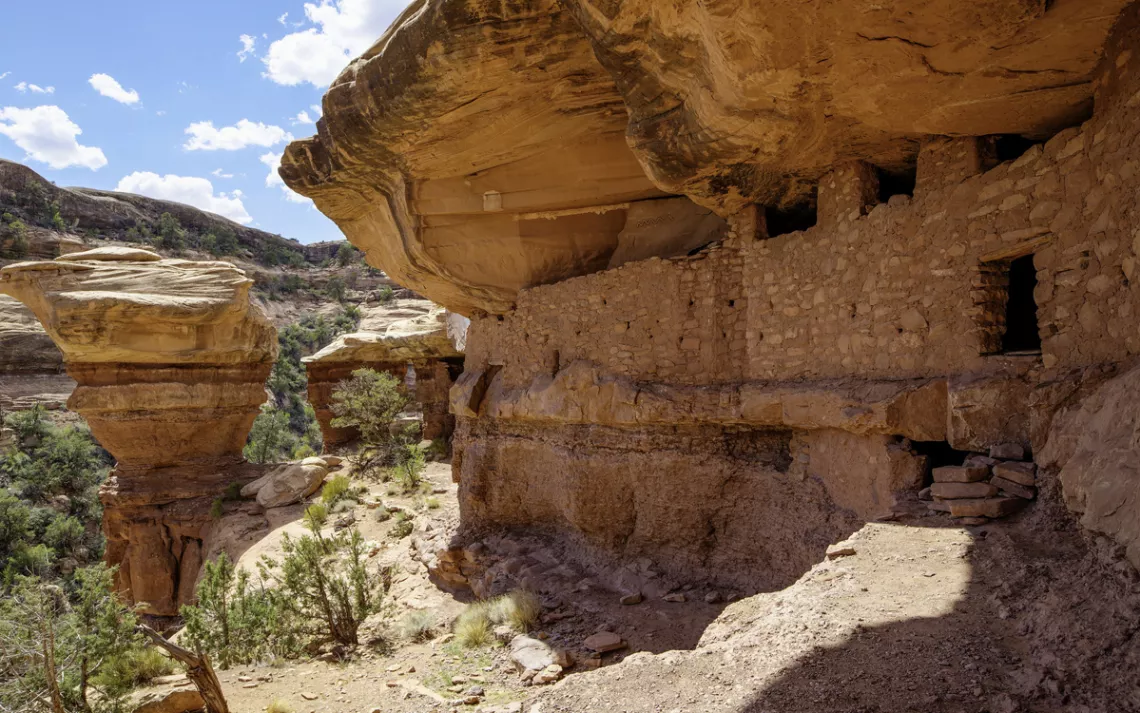
The proposed monument would include the Moon House, built in the 13th century by the Anasazi. | Photo courtesy of U.S. Bureau of Land Management
A hearing at the House Natural Resources Committee about the Shash Jáa and Indian Creek National Monument this week had a surreal quality. Tribal officials repeatedly told the HNRC that the proposed monument is not an honor but an insult.
Meanwhile, testimony from Utah politicians—federal, state, and local—held to a party line, best expressed in an op-ed by the monument’s sponsor, Utah representative John Curtis, published in the Salt Lake Tribune earlier this month: “Contrary to false claims, my bill empowers Utah’s local tribes.”
The bill that would create the new monument, H.R. 4532, declares that Shash Jáa will be the first tribally managed national monument. At the hearing, tribal leaders posed an alternative theory: Curtis wants Congress to approve Shash Jáa and Indian Creek not out of a deep-seated longing to aid tribal sovereignty, but to add the imprimatur of congressional approval to the Trump administration’s reduction of Bears Ears National Monument from 1.35 million acres to 142,337 acres—the boundaries of Shash Jáa and Indian Creek—and open up the freshly un-monumented land possibly to oil and gas development, and definitely to mining. (Casey Hammond, deputy assistant secretary of land and mineral management at the Interior Department, referred to this as “mineral withdrawal.”)
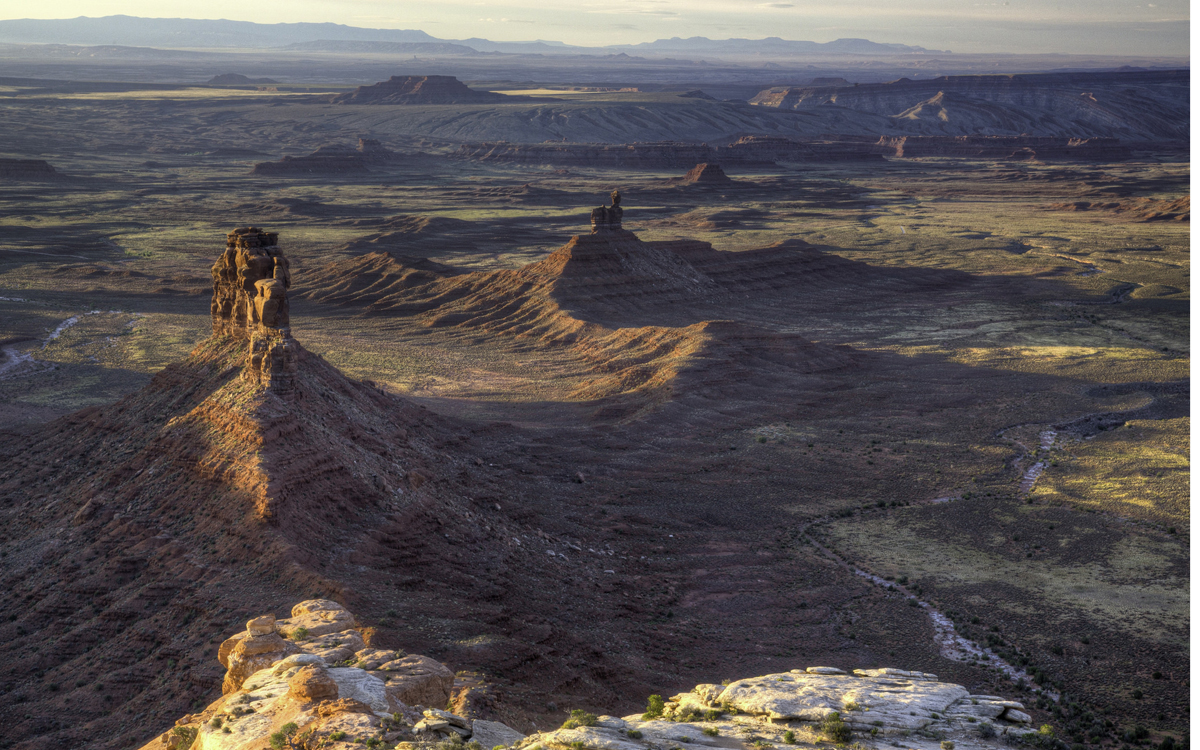
The Valley of the Gods was included in Bears Ears but not in Shash Jáa. | Photo courtesy of the Bureau of Land Management
Not only were the tribes not consulted about Shash Jáa, several tribal leaders said, but the name of the new monument is deceptive. In 2015, representatives for the Ute Mountain Ute, the Uintah Ouray Ute, and the Hopi, Zuni, and Navajo tribes settled on the name “Bears Ears,” partly as a pragmatic measure: When five cultures with five different languages get together, naming things can get complicated. Curtis’s proposal chose “Shash Jáa,” which is Navajo for “Bears Ears.”
Curtis did this, said Russell Begaye, president of the Navajo Nation, because he needed to create the impression that the Navajo were in favor of the monument. “In addition to providing a misleading bill name to suggest that the Navajo Nation supports the bill, H.R. 4532 also misleadingly states that its purpose is to ‘create the first tribally managed national monument,’” Begaye said in his testimony. “In fact, the miniature monuments created by the bill would be managed by appointees of President Trump made in consultation with the Utah congressional delegation and would be composed of only a fraction of tribal members. Incredibly, no tribe would have any input on the tribal members appointed to the management councils, and those individuals would not be required to be elected or appointed representatives of the five tribes’ governments. This bill’s ‘tribal management’ is tribal in name only.”
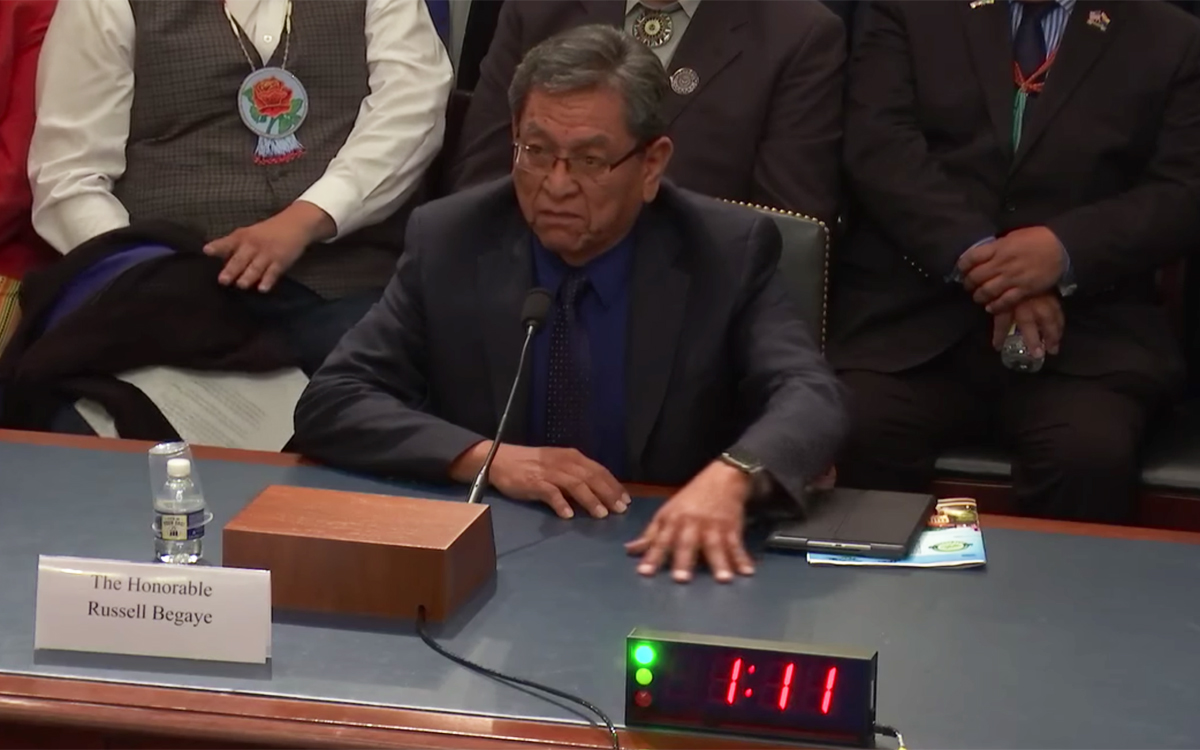
Russell Begaye | Photo courtesy of the House Committee on Natural Resources
The key word in Curtis’s claim that H.R. 4532 empowers Utah’s local tribes is “local.” Curtis appears to be talking about individual tribal members who live in the area, like Rebecca Benally, a San Juan County commissioner who is Navajo but is not an elected leader within the Navajo government.
“How would you like it if Russia or France went around the United States government to negotiate with private citizens?” said Tony Small, vice chairman of the Ute Business Committee, to the HNRC. “This is an attack on our sovereignty and violates the government-to-government relationship with the Indian tribes.”
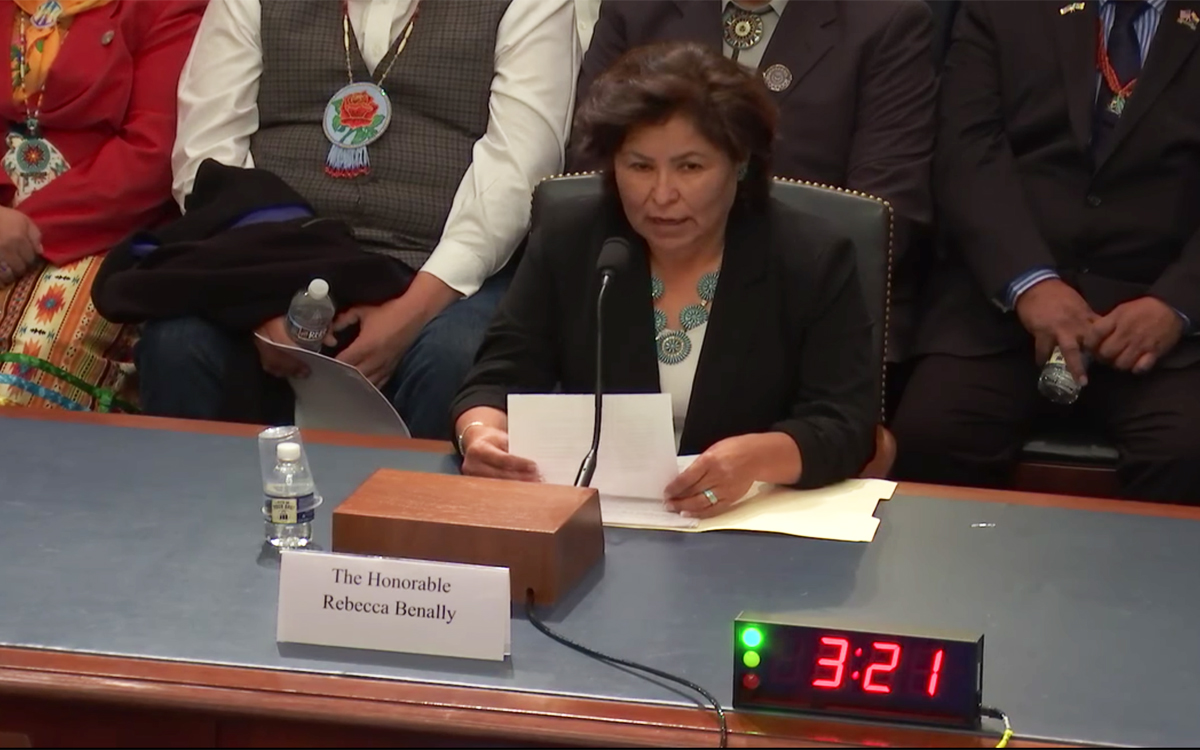
Rebecca Benally | Photo courtesy of House Committee on Natural Resources
“You don’t always have a title to represent the grassroots people,” said Benally. “I believe all lives matter. There are 567 tribes here in the United States of America and every step that we step is a sacred site.”
San Juan County has a complicated relationship to its place in the history of many Native American tribes. It’s one of the few places in the United States where the signs of thousands of years of Native American use and occupation are inescapable. Another county commissioner, Frank Lyman, spent 10 days in prison for organizing a 200-person convoy of ATVs through Recapture Canyon, in protest of federal laws protecting the area. The canyon was closed to motorized traffic nearly a decade earlier, after the Bureau of Land Management concluded ATV use was damaging the remnants of a 1,000-year-old Pueblo settlement in the canyon.
In 2009, 24 people, including the brother of the San Juan County sheriff, were indicted by a federal grand jury for stealing Native American artifacts and, in some cases, selling them. Two of those arrested had been caught near a dug-up Anasazi grave a decade earlier but escaped felony charges partly because hunting for pots and other artifacts was a popular hobby in the area that didn’t seem to cause much harm, even if it was technically illegal.
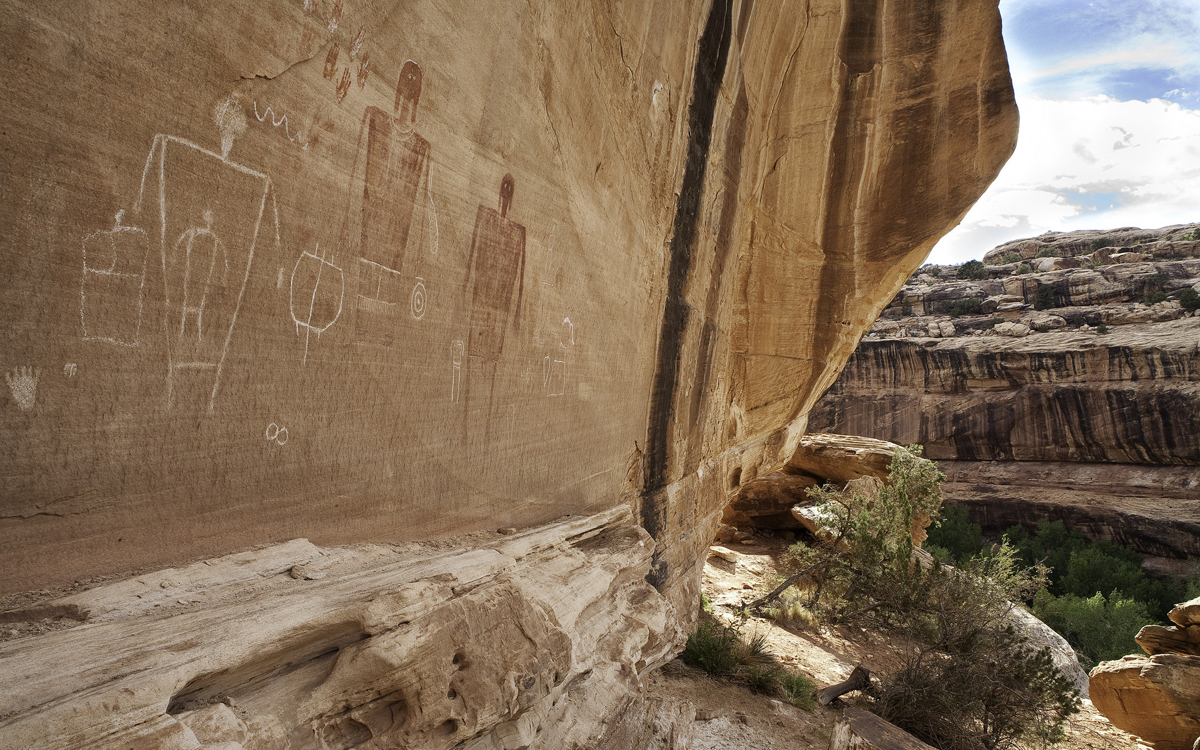
Cedar Mesa Grand Gulch was included in Bears Ears but not within the boundaries of Shash Jáa. | Photo courtesy of the Bureau of Land Management
To tribes like the Hopi, though, taking relics from the area is horrifying. “This land is a testament of Hopi stewardship through thousands of years,” said Clark Tenakhongva, the Hopi tribe’s commissioner for the Bears Ears Commission, at the hearing. Everything—the ancient villages, the pilgrimage trails, the artifacts, the petroglyphs, the graves—were all "intentionally left to mark the land as proof that the Hopi people have fulfilled their covenant.” The area set aside as Bears Ears saw thousands of years of foraging, migration, religious ceremonies, and, by the time the 19th century rolled around, use as a hideout from people trying to remove tribes from the area.
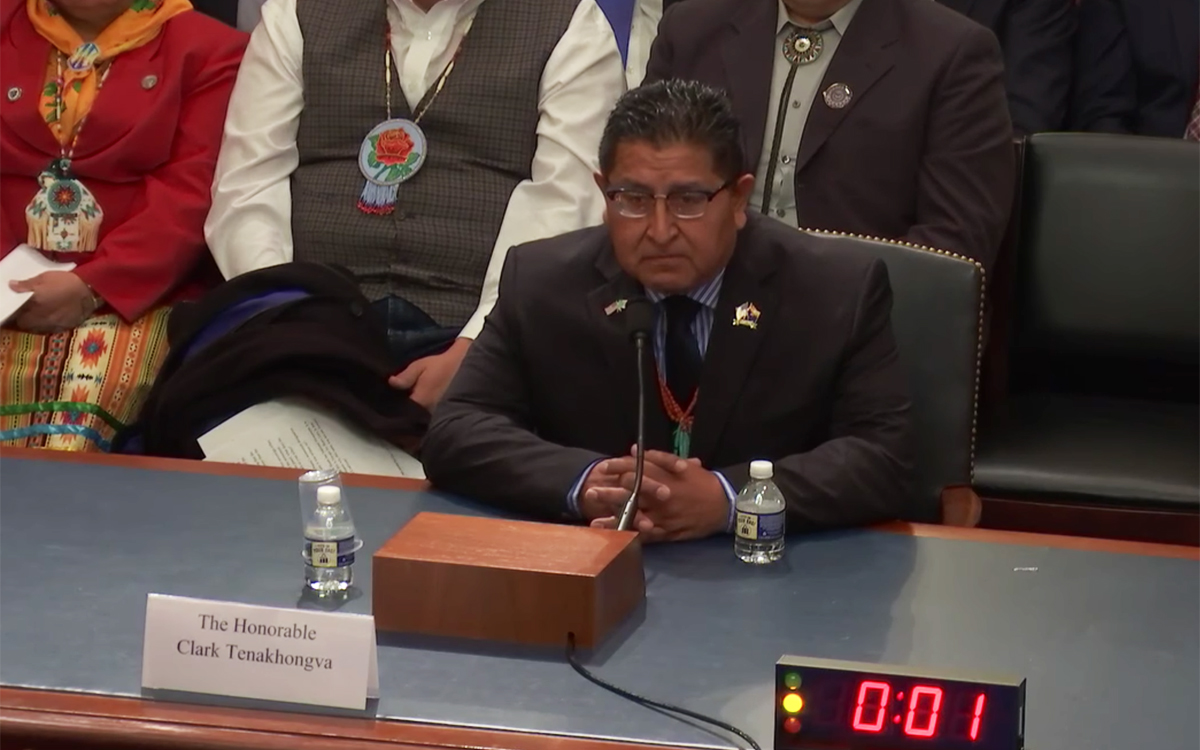
Clark Tenakhongva | Photo courtesy of the House Committee on Natural Resources
The balance of power in San Juan County is also complicated. While its population is evenly split between Native American and white residents, the county was ordered to redraw its electoral districts recently after a lawsuit filed by Native American residents found that the county violated the 14th amendment and several other voting-rights laws in ways that disenfranchised Native American voters.
San Juan County residents complain about tribes outside the county claiming a right to manage the landscape. Utah attorney general Sean Reyes drew a Super Bowl analogy in his testimony. “First, the Super Bowl creates buzz for many audiences,” Reyes said, “but that buzz dies down, except for the teams themselves and their die-hard fans. In my view, the debate over the monuments follows a similar pattern. I view the tribal, state, federal, and local governments as the teams who must manage these priceless lands for the public benefit. The die-hard fans of those teams are San Juan County residents.”
“The Bears Ears lands, though once controlled and used exclusively by tribes in the Southwest, are now federal lands, owned by all Americans,” said Carleton Bowekaty, the Zuni tribe’s appointed representative on the Bears Ears Commission. “While no disrespect is intended toward local governmental officials, most of whom work hard to better their communities, we recently saw in Oregon and Nevada what happens when local residents think they should control federal land for their own benefit in disregard of federal laws.”
This week’s hearing over H.R. 4532 is actually the second the committee has held. Having more than one hearing is rare, and the second was scheduled after objections were raised about the first, held on January 9. At that hearing, one five-minute window of testimony was reserved for the five tribes who created the Bears Ears Intertribal Coalition. The other three were reserved for Utah governor Gary Herbert, Matthew Anderson, a lobbyist with the Koch-backed Sutherland Institute, and Suzette Morris, a Ute woman who blamed the national monument campaign for Bears Ears on “the environmentalists,” and said that the original monument designation prevented her from gathering traditional medicines (it did not).
“Our coalition is five tribes, federally recognized in the Constitution long before Utah became a state,” said Shaun Chapoose, who spoke on behalf of the intertribal coalition at the first hearing. “Talking with an individual tribal member is not government-to-government consultation. This council is a return to the 1800s, where the U.S. government would divide tribes by cherry-picking tribal members it wanted to negotiate with. It is up to the tribal government, not the United States, to select our own representatives.”
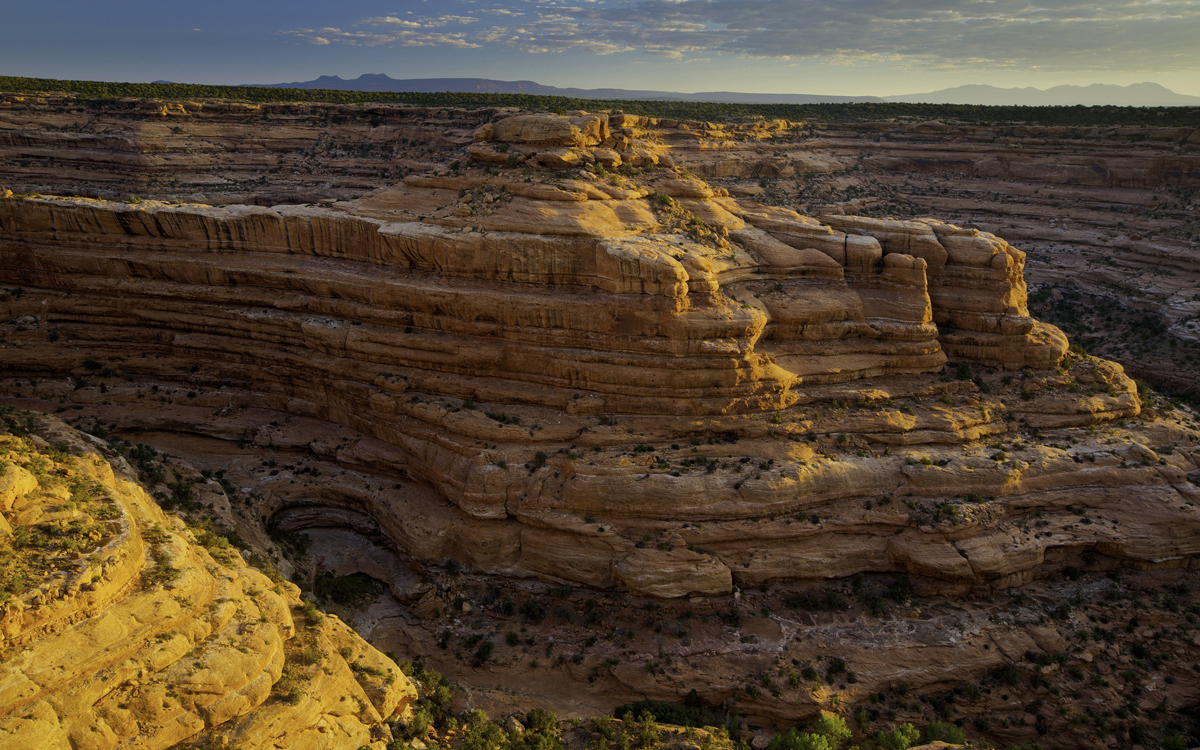
Cedar Mesa Citadel Ruins, also not included in Shash Jáa | Photo courtesy of the Bureau of Land Management
The intertribal coalition encouraged the HNRC to hold a hearing about H.R. 4518, which has already gathered 112 cosponsors, instead of H.R. 4532, which only has three—all representatives from Utah. 4518 seeks to return Bears Ears not to its Obama-sanctioned size of 1.3 million acres, but to the size that the coalition originally asked for: 1.9 million acres.
For the coalition, this is hardly too much to ask. “We still practice what we practiced there in Bears Ears,” said Clark Tenakhongva to Colleen Hanabusa. Hanabusa was noteworthy as one of the few HNRC members who was not overtly dismissive of the coalition while they gave testimony. Rob Bishop, one of 4532’s cosponsors, seemed to take particular delight in mispronouncing the name of every person testifying on behalf of the five tribes.
“Other tribes have that connection also,” Tenakhongva continued. “Our clan—Tobacco and Rabbit clan—were some of those people who may have constructed those buildings. Some people just don't understand—we left those as evidence and markers way before the arrival of Columbus and the Pilgrims here. Please respect why we left them."
"Money is money. Life is more important than money. We can continue to argue about prospering in this nation. But respecting one anothers' rights and religion is all we ask for.”
 The Magazine of The Sierra Club
The Magazine of The Sierra Club



